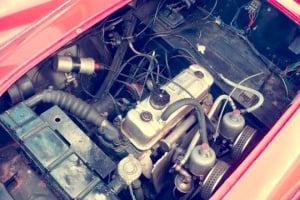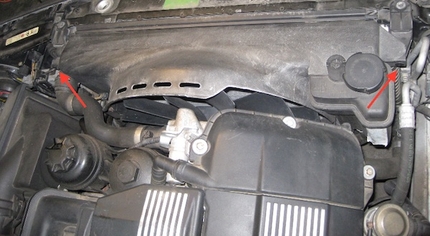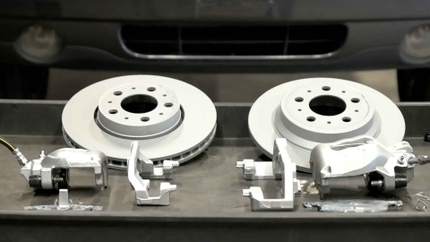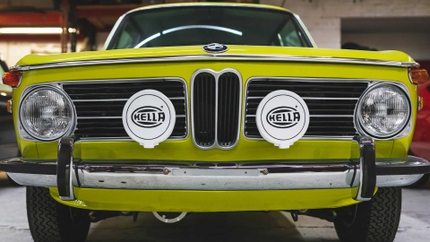- 03/13/2014
- 2 Min Read
- By: Uilleam Ross
The Good Old Days of Points, Condensers, and SU Fuel Pumps
You just hate that feeling. You're driving down a peaceful country road with hardly any traffic, enjoying the scenery with your favorite tunes emanating from 250 watts of surround sound perfection. Then it happens, no warning, nothing. The car just quits running.
So, you press the gas pedal down further just in case. You look around, confused, making sure that someone hasn't swiftly run along behind you and clipped a large anchor to your rear tow ring. And now you have the ever helpful Check Engine Light glaring at you from the dash. As you coast to the side of the road, your mind rapidly inventories all recent car-related activities and service. Nope, no recent visits to the dealership, no stops at the local teenager-run oil change joint, just pitstops at the local Stop and Gas.
The hood hasn't even been opened on this car in the last 3 months, there wasn't any reason to because there isn't anything in there that is worth looking at anyway. Additionally, you might not even know what to look for if there was a problem and that's even if you could see past the all-encompassing, but very pretty, engine cover. Its not like you don't have mechanical experience, its that cars today just don't need as much looking after as they used to need, and if they do, us mere humans, are not qualified or equipped to do a whole lot. So, off it goes on the hook to the shop as you forlornly stand on the roadside.
This was not always the case. Cars used to be simple, designed by simple engineers for simple people. I didn't have fuel injection on any of my cars until I owned a 1979 SAAB 99, electronic ignition until 1987, on my Ford Scorpio, coil packs until a 1993 Audi 90SQ, and nothing fully digital until my current 2002 Volvo XC70. My first “real” car was 1958 MGA that had something resembling carburetors, called twin SU's, to provide fuel and an ignition system, for want of a better term, that had a Lucas distributor, with a cap and rotor to provide spark. The entire electric system was “protected” by two fuses.
These older car would quit as they trundled down the road, but when they did it was nearly always accompanied by the smell of burning wiring or the lack of “ticking” from the SU fuel pump (more on this later). Normally these cars would just progressively run worse to the point that you just couldn't take it any longer. So, the next sunny Saturday morning, you would open up the hood and lo and behold there would be a mass of metal and some wires. Something real you could get your hands on.
Out would come your tools and, as this was my first car, not that many tools. A couple of screwdrivers, a small set of wrenches (Imperial not metric because the sun never sank on the automotive world), an adjustable wrench (some of the fittings were still Whitworth on these thing, look it up), a set of feeler gauges, and some emery cloth. Pull the spark plugs to be cleaned and re-gapped. Next, off would be the distributor cap and rotor which a quick look and some emery cloth would get things reasonably shiny and conductive again.
Finally, you would carefully re-set the points gap, which was always off from what it was supposed to be. No matter how tight you would screw down the holding screw (but be careful, you'll strip it), the points would slip their setting a couple of thousands and resetting to proper gap would get things right again. If you were either adventurous or entering stages of automotive insanity, you would finish up the job by getting a short length of half inch hose and proceed to “synchronize” the SU carbs.
Next would be a quick wash and you would be good for another week of relatively untroubled driving. Unless, you had a SU electric fuel pump. These contraptions also had a set of points, which after a bit of running, bad weather, planet alignment, or an act of God, Lucas' would fuse together and stop fuel flow. In a moment of British engineering pride, these pumps were never located where you could pull the cap and clean up the points; but they were located where a quick rap with the handle of a large screwdriver would get them tapping merrily again. And nearly every owner of a SU-pumped car that I knew had a large wood-handled screwdriver handily tucked under the driver seat for just such an occasion. And you always made sure that you had a dry paper match book tucked somewhere as the covers made the perfect emergency tool for setting point gap in case you couldn't make it to Saturday.
Yes, it was the good old days. Stopped along side of the road with a problem, you would soon be joined by other car owners all offering help, a loan of their wood-handled screwdriver or that bit of advice on proper point gap in a Lucas distributor. No one ever used a tow truck as nothing was ever quite that bad, and someone always came by with a Ford station wagon and a good length of sturdy tow rope. Ah, the good old days....
Do you carry a set of emergency tools in your car or do you even know what is in your tool pouch if your car came so equipped?
About the Author: Uilleam Ross
 Uilleam (Bill) Ross is a 60 year-old retired 30-year veteran of the IT industry and a 45-year car guy. Living in Western Head, Nova Scotia, he now indulges his passions for landscape photography and cars, principally Volvos and Land Rovers.
Uilleam (Bill) Ross is a 60 year-old retired 30-year veteran of the IT industry and a 45-year car guy. Living in Western Head, Nova Scotia, he now indulges his passions for landscape photography and cars, principally Volvos and Land Rovers.












